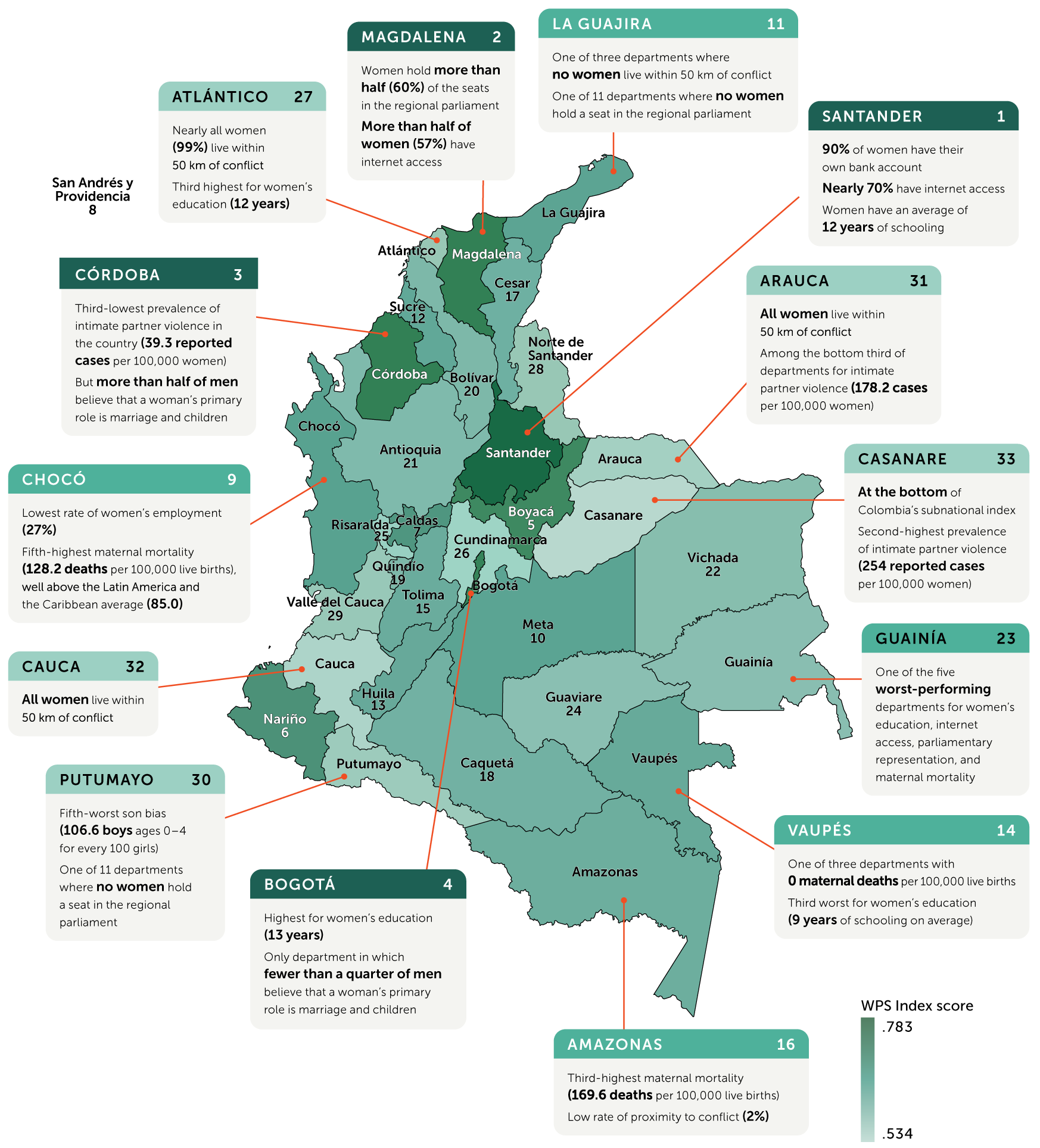
More than 8.8 million people in Colombia—approximately 17 percent of the population—have been officially registered as victims of armed conflict, most of them forcibly displaced women and children. Conflict has affected women’s status and security in varying and often disproportionate ways, especially through increased risks of gender-based violence and displacement. More than two women in five in Colombia have experienced some form of gender-based violence related to the conflict, though such violence is likely underreported.
Insecurity of women at the national level builds on insecurity at the community and household levels. Nearly two-thirds of women nationally report not feeling safe walking alone in their neighborhood at night, while pervasive impunity, enabled by weak and corrupt law enforcement systems, has contributed to widespread domestic violence. Conflict exacerbates this pattern.
Colombia ranks 132 on the WPS Index overall, but subnational analysis of the country’s 33 departments reveals a wide range of scores, with top-ranking Santander scoring .783, and bottom-ranking Casanare scoring .534. Santander’s strong performance can be attributed to women’s high rates of education, internet use, and financial inclusion, along with low rates of maternal mortality and proximity to conflict.
Casanare has the lowest life expectancy for women among departments and is 1 of 11 departments with no female members in the House of Representatives. Casanare performs particularly poorly on the security dimension. It has the second-highest prevalence of intimate partner violence in the country, and 80 percent of women live within 50 kilometers of armed conflict.
Overall, Colombian departments that have been most affected by armed conflict, as well as those that have larger Indigenous and Afro-Colombian populations, tend to rank lower on the subnational index. Subnational data for Colombia are available to download the link above and further analysis is available in chapter 3 of the WPS Index report.